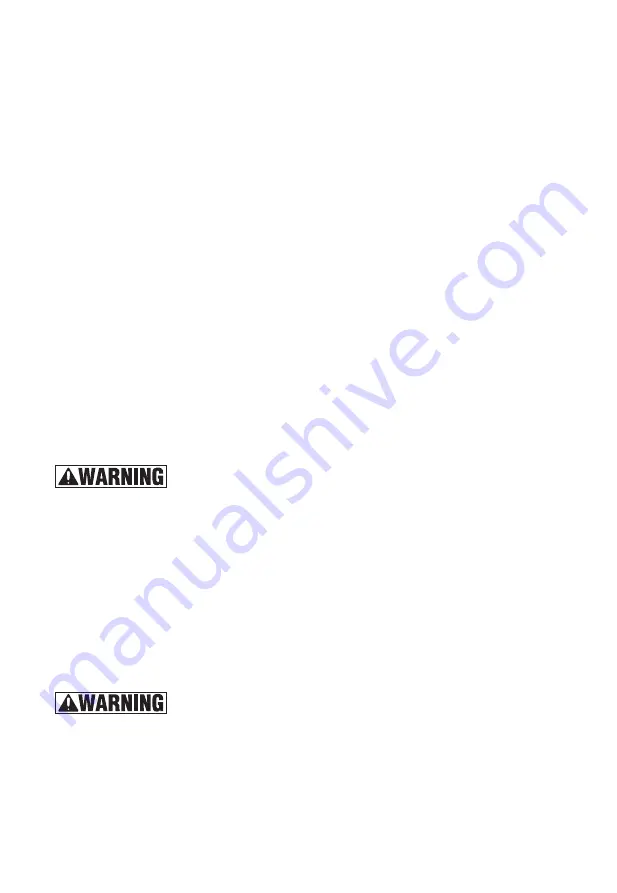
As specific operating conditions (such as real flow rate, nature and temperature of the measured
fluid) may affect the meter accuracy, a recalibration should be carried out after the installation
has been completed. A new calibration is necessary each time the meter is disassembled for
maintenance or when it is used to measure fluids other than kerosene.
CALIBRATION PROCEDURE
1. Unscrew the plug (see diagram, #26).
2. Purge the system (pump, pipelines & meter) of air by dispensing until the flow stream is full
and steady.
3. Stop the flow by shutting off the nozzle, but let the pump continue to run.
4. Reset the batch register with the reset knob (#2).
5. Dispense at the most accurate flow rate, by using a calibrated container with a capacity of 5
gallons or more. Do not reduce the flow in order to reach the graduated zone of the
calibrated container. Instead, use a “top-off” method, starting and stopping the full flow
repeatedly until the required level is reached.
6. Compare the indication of the calibrated container (real value) with the meter’s indicated value.
a) If the indicated value is higher than the real value, loosen the screw (#24).
b) If the indicated value is lower than the real value, tighten the screw (#24).
7. Repeat the steps 4 to 6 until satisfactory accuracy is achieved.
8. Tighten the plug (#26) again. The O-ring (#23) provided with the calibration screw will hold the
new calibration position to avoid accidental loosening of the adjustment screw but does not seal
the unit, so it is always necessary to properly fix the plug (#26) with the sealing gasket (#25).
USE
After installation and calibration, the meter is ready to work.
Turn the reset knob (#2) clockwise if it is mounted on the left of the meter and counterclockwise
if it is mounted on right, until the batch register is completely reset. The total register cannot be
reset in any way.
Make sure that during use pressure does not exceed 50 PSI.
OPERATION
GRAVITY-FED SYSTEMS
The meter can also be used in gravity-fed fuel units where the flow is generated by the
difference in fuel level between the tank and the nozzle outlet. As a general rule, a gravity-fed
system composed of a tank off the ground that has the meter installed at the bottom of the
tank, using a 9.8-ft. long 1” flexible pipe, guarantees a flow rate of approximately 8 GPM if the
height difference is greater than 5 feet. Longer pipes or nozzles producing higher pressure
losses will reduce the flow rate.
NOTE: Use of this meter for gravity-fed systems with level differences less than 3 feet is not
recommended because the reduced flow rate causes the meter to work outside its guaranteed
accuracy range. Onsite calibration is required in any gravity-fed installation.
Before disassembling the meter, always make sure that all fluid is drained from the meter and
pipes connected with the meter.
User can carry out periodic cleaning of the unit with a soft brush or small tool (i.e. a screw-
driver). During cleaning, be careful not to damage the chamber or the disk. Carefully check the
meter and replace any damaged parts. Only use the original spare part kits (not included)
shown in PART LISTS AND DIAGRAM.
NOTE:
A new calibration is always necessary after cleaning or replacing the meter parts.
E14
Содержание FTWM120-001
Страница 19: ......





































